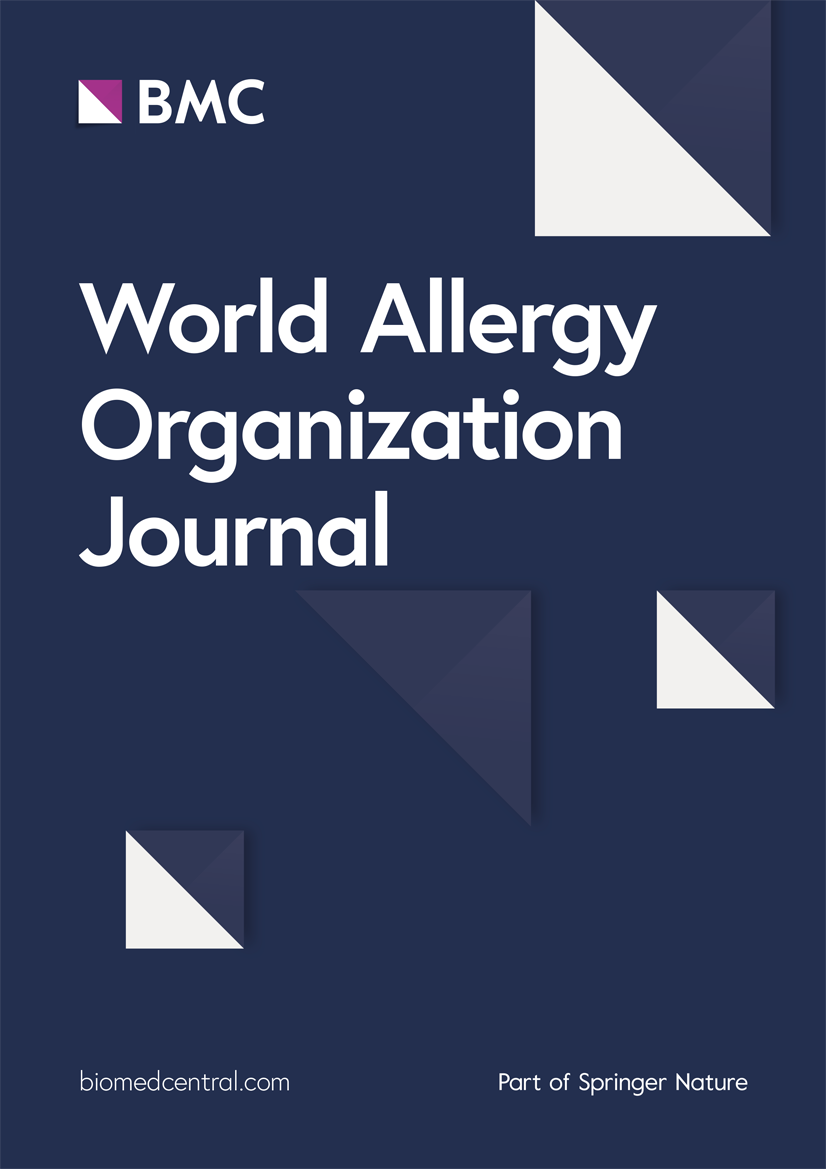孟德尔随机分析揭示了过敏性疾病与流感之间的因果关系
IF 4.3
2区 医学
Q2 ALLERGY
引用次数: 0
摘要
变应性疾病和流感具有相似的遗传背景和病理生理机制。观察性研究已经确立了这两种情况之间的相关性;然而,因果关系的确切方向仍不清楚。本孟德尔随机化(MR)研究旨在评估过敏性疾病与流感之间的因果关系。材料与方法本研究利用全基因组关联研究(GWAS)的汇总统计数据,采用双样本MR方法综合分析变应性疾病(哮喘、花粉热、湿疹)、特应性皮炎(AD)、花粉热或变应性鼻炎(AR)与不同类型流感(包括所有流感、不包括肺炎的普通流感、严重流感(包括流感和肺炎)使用遗传因素作为工具变量。分析主要依靠逆方差加权随机效应模型(IVW-RE)。结果IVW-RE分析显示过敏性疾病(哮喘、花粉热或湿疹)与所有流感和严重流感(流感和肺炎)之间存在显著相关性。此外,AR(花粉热或过敏性鼻炎)与所有流感和普通流感(不包括肺炎)都有关。此外,哮喘与严重流感(流感和肺炎)之间存在显著相关性。然而,没有证据支持阿尔茨海默病和流感之间的因果关系。结论本MR研究结果支持过敏性疾病、哮喘和流感(包括严重流感)之间的因果关系。这一发现表明过敏性疾病和哮喘是流感的重要危险因素。此外,本研究提供了高质量的因果证据,可以为旨在预防流感发病的临床实践提供信息,特别是在呼吸道过敏和哮喘人群中。本文章由计算机程序翻译,如有差异,请以英文原文为准。
Mendelian randomization analysis reveals causal relationship between allergic diseases and influenza
Background
Allergic diseases and influenza share similar genetic backgrounds and pathophysiological mechanisms. Observational studies have established a correlation between these 2 conditions; however, the precise direction of the causal relationship remains unclear. This Mendelian randomization (MR) study aims to evaluate the causal relationship between allergic diseases and influenza.
Materials and methods
This study utilized summary statistical data from genome-wide association studies (GWAS) and employed the two-sample MR method to comprehensively analyze the causal relationships between allergic diseases (asthma, hay fever, eczema), atopic dermatitis (AD), hay fever or allergic rhinitis (AR), and different types of influenza (including all influenza, regular influenza excluding pneumonia, and severe influenza that encompasses both influenza and pneumonia) using genetic factors as instrumental variables. The analysis primarily relied on the inverse variance weighted random effects model (IVW-RE).
Results
The IVW-RE analysis revealed significant correlations between allergic diseases (asthma, hay fever, or eczema) and both all influenza and severe influenza (influenza and pneumonia). Additionally, AR (hay fever or allergic rhinitis) was associated with both all influenza and regular influenza (excluding pneumonia). Furthermore, a significant correlation was found between asthma and severe influenza (influenza and pneumonia). However, there is no evidence to support a causal relationship between AD and influenza.
Conclusion
The results of this MR study support a causal relationship between allergic diseases, asthma, and influenza, including severe influenza. This finding suggests that allergic diseases and asthma are significant risk factors for influenza. Additionally, this study provides high-quality causal evidence that can inform clinical practices aimed at preventing the onset of influenza, particularly in populations with respiratory allergies and asthma.
求助全文
通过发布文献求助,成功后即可免费获取论文全文。
去求助
来源期刊

World Allergy Organization Journal
Immunology and Microbiology-Immunology
CiteScore
9.10
自引率
5.90%
发文量
91
审稿时长
9 weeks
期刊介绍:
The official pubication of the World Allergy Organization, the World Allergy Organization Journal (WAOjournal) publishes original mechanistic, translational, and clinical research on the topics of allergy, asthma, anaphylaxis, and clincial immunology, as well as reviews, guidelines, and position papers that contribute to the improvement of patient care. WAOjournal publishes research on the growth of allergy prevalence within the scope of single countries, country comparisons, and practical global issues and regulations, or threats to the allergy specialty. The Journal invites the submissions of all authors interested in publishing on current global problems in allergy, asthma, anaphylaxis, and immunology. Of particular interest are the immunological consequences of climate change and the subsequent systematic transformations in food habits and their consequences for the allergy/immunology discipline.
 求助内容:
求助内容: 应助结果提醒方式:
应助结果提醒方式:


